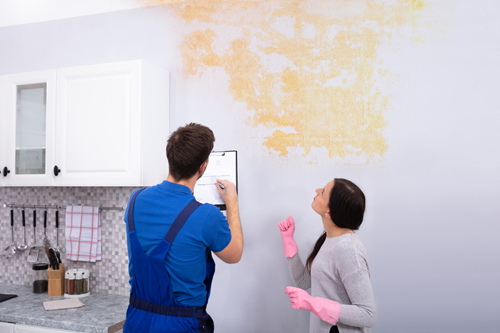Do's as well as Don'ts During Water Damage Emergency Situations.
Do's as well as Don'ts During Water Damage Emergency Situations.
Blog Article
They are making a number of great annotation relating to Ways to Reduce The Risk Of Fire And Water Damage overall in this post below.

Though water gives life, water breach on parts where it's not expected to be can cause damages. If the water saturates into your framework, it can peel away surface areas and also deteriorate the structure. Mold and mildew and also mold likewise flourish in a wet setting, which can be hazardous for your health and wellness. Residences with water damages odor stuffy and old.
Water can originate from many resources such as typhoons, floodings, ruptured pipes, leaks, as well as sewage system concerns. In case you experience water damages, it would be good to know some security preventative measures. Right here are a couple of standards on just how to manage water damages.
Do Prioritize Home Insurance Protection
Water damage from flood because of heavy winds is seasonal. You can also experience an abrupt flood when a damaged pipeline instantly ruptures right into your home. It would certainly be best to have home insurance policy that covers both acts of God such as all-natural calamities, as well as emergency situations like broken plumbing.
Don't Forget to Switch Off Energies
In case of a disaster, especially if you live in a flood-prone area, it would be advisable to turn off the main electrical circuit. This cuts off power to your entire residence, protecting against electric shocks when water can be found in as it is a conductor. Don't neglect to turn off the major water line valve. Furniture will certainly relocate around and also create damages when floodwaters are high. Having the primary valve shut off protects against additional damage.
Do Keep Proactive as well as Heed Weather Condition Alerts
Listen to evacuation cautions if you live near a river, lake, or creek . Doing so decreases potential residential or commercial property damages.
Do Not Neglect the Roof
You can avoid rain damages if there are no openings as well as leaks in your roof covering. This will certainly stop water from streaming down your walls and also saturating your ceiling.
Do Take Note Of Small Leakages
A burst pipeline doesn't occur overnight. Normally, there are red flags that show you have damaged pipes in your house. For example, you may see bubbling paint, peeling off wallpaper, water streaks, water discolorations, or dripping noises behind the wall surfaces. Eventually, this pipe will rupture. Preferably, you need to not wait for things to intensify. Have your plumbing fixed prior to it causes massive damage.
Do Not Panic in Case of a Ruptured Pipe
Keeping your presence of mind is important in a time of dilemma. Worrying will just intensify the issue since it will suppress you from acting quickly. Timing is vital when it comes to water damages. The longer you wait, the more damages you can expect. Thus, if a pipeline bursts in your home, immediately turned off your main water shutoff to cut off the resource. Disconnect all electrical outlets in the location or transform off the circuit breaker for that part of the residence. Call a trustworthy water damage remediation expert for aid.
Water gives life, water intrusion on parts where it's not supposed to be can result in damages. Residences with water damages odor old and also stuffy.
Water damage from flood charges to hefty winds is seasonal. You might discover bubbling paint, peeling off wallpaper, water streaks, water stains, or trickling noises behind the walls. When it comes to water damages, timing is crucial.
Some Do's & Don't When Dealing with a Water Damage
DO:
Make sure the water source has been eliminated. Contact a plumber if needed. Turn off circuit breakers supplying electricity to wet areas and unplug any electronics that are on wet carpet or surfaces Remove small furniture items Remove as much excess water as possible by mopping or blotting; Use WHITE towels to blot wet carpeting Wipe water from wooden furniture after removing anything on it Remove and prop up wet upholstery cushions for even drying (check for any bleeding) Pin up curtains or furniture skirts if needed Place aluminum foil, saucers or wood blocks between furniture legs and wet carpet Turn on air conditioning for maximum drying in winter and open windows in the summer Open any drawers and cabinets affected for complete drying but do not force them open Remove any valuable art objects or paintings to a safe, dry place Open any suitcases or luggage that may have been affected to dry, preferably in sunlight Hang any fur or leather goods to dry at room temperature Punch small holes in sagging ceilings to relieve trapped water (don't forget to place pans beneath!); however, if the ceiling is sagging extremely low, stay out of the room and we'll take care of it DO NOT:
Leave wet fabrics in place; dry them as soon as possible Leave books, magazines or any other colored items on wet carpets or floor Use your household vacuum to remove water Use TV's or other electronics/appliances while standing on wet carpets or floors; especially not on wet concrete floors Turn on ceiling fixtures if the ceiling is wet Turn your heat up, unless instructed otherwise

I ran across that content on Ways to Reduce The Risk Of Fire And Water Damage when exploring the web. So long as you enjoyed our post kindly remember to share it. We treasure reading our article about Reducing Your Risk Of Water And Fire Damage At Home.
Report this page